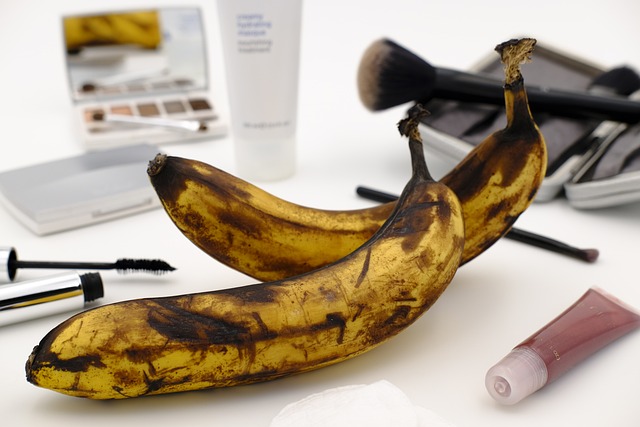Wrinkles are caused by aging and environmental factors, leading to skin structural changes. Anti-aging treatments include topical creams with peptides, retinol, vitamin C, and hyaluronic acid, which stimulate collagen production and reduce fine lines. Injections like Botox and fillers smooth muscles and minimize expression wrinkles. Laser therapy targets damaged tissue for a youthful glow. Holistic approaches like a nutritious diet, hydration, and sun protection are also vital. Future treatments combine advanced technology, genomics, and AI for personalized, effective anti-aging wrinkle solutions.
The quest for smoother skin and a more youthful appearance drives countless individuals to explore various anti-aging wrinkle treatments. From topical creams and injections to laser therapy, understanding these options is key to making informed decisions. This article delves into the science behind wrinkle formation, dissects popular treatments like creams, injections, and lasers, explores lifestyle changes for a radiant complexion, and discusses emerging trends shaping the future of anti-aging skincare.
Understanding Anti-Aging Wrinkle Treatments: Unveiling Their Role in Skin Care

Anti-Aging Wrinkle Treatments play a pivotal role in modern skincare routines. These treatments are designed to combat the visible signs of aging by addressing key contributors such as environmental damage, loss of collagen production, and cellular turnover. By using potent ingredients like retinol, peptides, and antioxidants, they aim to reduce fine lines and wrinkles, improve skin texture, and restore a youthful glow. Understanding how these treatments work is crucial for making informed decisions about your skincare regimen.
The effectiveness of Anti-Aging Wrinkle Treatments lies in their ability to stimulate collagen production, protect the skin from free radical damage, and enhance cellular renewal. Collagen is a protein essential for maintaining skin elasticity, while peptides can mimic the action of specific proteins to boost collagen synthesis. Antioxidants act as a shield against environmental stressors, neutralizing harmful radicals that contribute to premature aging. Regular use of these treatments can significantly enhance overall skin health and appearance, ensuring that your skincare routine delivers visible results.
The Science Behind Wrinkle Formation: Factors and Causes

The science behind wrinkle formation is complex and multifaceted. Wrinkles develop as a result of various factors, primarily related to aging and environmental exposure. The most significant contributors include loss of collagen and elastin, two key proteins that provide skin with strength and elasticity. Over time, these proteins degrade due to enzymes called proteases, triggered by sun damage, free radical stress, and natural cellular processes. This breakdown causes the skin’s structure to relax and sag, leading to the formation of wrinkles. Additionally, factors like smoking, poor diet, dehydration, and lack of sleep can accelerate the process. Understanding these causes is crucial for developing effective anti-aging wrinkle treatments.
Topical Creams and Serums: Effective Ingredients for Smoothing Fine Lines and Wrinkles

Topical creams and serums are a popular choice for those seeking effective anti-aging wrinkle treatments. These products contain powerful ingredients designed to penetrate deep into the skin, where they can stimulate collagen production and reduce the appearance of fine lines and wrinkles. Key active ingredients include peptides, retinol, vitamin C, and hyaluronic acid, each with its unique benefits. Peptides, for instance, signal cells to produce more collagen and elastin, while retinol increases cell turnover and unclogs pores. Vitamin C acts as an antioxidant, protecting the skin from environmental damage, and hyaluronic acid hydrates the skin, plumping up fine lines from within.
When selecting a topical cream or serum, it’s crucial to consider your specific skin concerns and type. Different formulations cater to various needs—some are tailored for sensitive skin, while others target deep wrinkles or hyperpigmentation. Regular use of these treatments can significantly improve skin texture, enhance elasticity, and provide a smoother, more youthful complexion.
Injections: A Medical Approach to Reducing Dynamic Wrinkles

Injections are one of the most effective medical approaches to reducing dynamic wrinkles. These treatments involve the use of various substances like Botox or filler materials to smooth out fine lines and wrinkles caused by muscle movement. Anti-aging wrinkle treatments such as injections offer a non-surgical solution that can significantly improve facial aesthetics. By relaxing specific muscles, these injections prevent them from contracting, thus minimizing the appearance of dynamic wrinkles. This medical procedure is particularly popular for treating expression lines around the eyes, forehead, and mouth areas.
The benefits of injections extend beyond just wrinkle reduction. They also provide a temporary yet noticeable lift to the face, enhancing overall facial structure and promoting a more youthful appearance. As with any anti-aging treatment, it’s crucial to consult with a qualified medical professional who can determine the most suitable injection type and technique for individual needs.
Laser Therapy: Targeting Deep Wrinkles with Precision

Laser therapy offers a precise and effective solution for targeting deep wrinkles. Using concentrated light beams, this anti-aging wrinkle treatment works by stimulating collagen production and breaking down damaged tissue. The non-invasive procedure can significantly reduce the appearance of fine lines and wrinkles over time, providing a youthful glow.
Through advanced technology, laser therapy ensures minimal discomfort and faster recovery compared to some other treatments. It is suitable for various skin types and conditions, making it a popular choice among those seeking effective anti-aging wrinkle treatments.
Lifestyle Changes: Diet, Hydration, and Sun Protection for a Youthful Skin

A youthful complexion is not just about external treatments; lifestyle choices play a significant role in maintaining skin health and preventing premature aging. Incorporating simple yet effective habits can be powerful anti-aging wrinkle treatments.
Start with your diet: consuming a balanced diet rich in fruits, vegetables, lean proteins, and whole grains provides the essential nutrients needed for collagen production and overall skin health. Stay hydrated by drinking ample water throughout the day to keep your skin moisturized from within. Additionally, sun protection is paramount; daily application of sunscreen with at least SPF 30 can prevent photoaging and UV damage, two primary contributors to wrinkles.
Emerging Trends in Anti-Aging: Future Treatments and Technologies

The future of anti-aging wrinkle treatments is promising and exciting, with researchers exploring innovative technologies and approaches. One emerging trend is the use of advanced skincare devices that combine different treatment modalities like light therapy, radiofrequency, and ultrasound to target wrinkles from multiple angles. These devices often feature precise, controlled energy delivery systems that can stimulate collagen production and improve skin elasticity.
Another area of focus is personalized medicine, where treatments are tailored to an individual’s genetic makeup and skin type. This approach leverages advancements in genomics and skincare science to offer more effective and targeted anti-aging solutions. Additionally, the integration of artificial intelligence (AI) and machine learning algorithms promises to revolutionize skincare routines by providing customized recommendations based on real-time skin analysis, helping users make informed choices for their specific needs.
